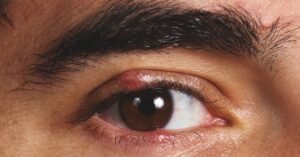Oral and Maxillofacial Surgery_ Everything You Need to Know
Understanding Oral and Maxillofacial Surgery
Oral and maxillofacial surgery addresses complex dental and medical conditions involving the mouth, teeth, jaws, and facial structures. It is widely used for facial reconstruction, trauma repair, and advanced dental procedures such as wisdom tooth extraction and dental implants.
What Is Oral and Maxillofacial Surgery?
Oral and maxillofacial surgery (OMS) involves surgical treatment of the oral cavity (mouth), maxilla (upper jaw), and facial region. Though it overlaps with dentistry, OMS extends into advanced areas such as tumor removal, corrective jaw surgery, and facial cosmetic procedures. Surgeons in this field typically undergo dental training plus an additional 4 to 6 years of medical or surgical education. Some pursue further specialization in areas like oncology, microvascular surgery, or pediatric craniofacial corrections.
When Is Oral and Maxillofacial Surgery Required?
OMS may be recommended for a wide range of issues, from minor dental extractions to complex reconstructions. Procedures can be elective, scheduled, emergency-based, inpatient, or outpatient, depending on the diagnosis. These surgeons often collaborate with other specialists like oncologists and orthopedic or ENT surgeons in complicated cases involving the head or neck.
Contraindications to Oral and Maxillofacial Surgery
While there are few absolute contraindications, the inability to safely undergo general anesthesia is a major limiting factor. Alternative options like local blocks or sedation may be considered. Certain relative contraindications may delay or prevent elective surgery, including:
-
Severely high blood pressure (systolic ≥ 180 mmHg, diastolic ≥ 110 mmHg)
-
Active infections requiring prior treatment
-
Advanced osteonecrosis (bone death)
-
Certain cancers that may metastasize due to surgical intervention
Common Risks and Complications
Every surgical procedure carries some level of risk. Oral and maxillofacial procedures—especially those involving facial reconstruction or trauma—may lead to:
-
Unintended changes in facial appearance
-
Jaw misalignment or bite alteration
-
Breathing issues due to nasal or sinus changes
-
Facial nerve damage leading to numbness, pain, or loss of muscle control
-
Alveolar osteitis (dry socket) following tooth extractions
-
Condensing osteitis (jawbone inflammation)
-
Tissue necrosis caused by restricted blood flow
Medical Conditions Treated With OMS
Oral and maxillofacial surgery is used to treat various conditions affecting the head, face, mouth, and neck. These include:
Diagnostic and Therapeutic Procedures
-
TMJ surgery: Addresses jaw joint dysfunction and related pain
-
Maxillomandibular osteotomy: Repositions jaws to improve airway and treat sleep apnea
-
Radiofrequency ablation: Minimally invasive treatment for trigeminal neuralgia and migraines
-
Septoplasty with turbinate reduction: Corrects deviated septum to improve breathing
-
Tumor resection: Removes benign or malignant masses from the head and neck
Dentoalveolar Procedures
-
Dental implants: Placement of endosteal or subperiosteal implants into or above the jawbone
-
Orthognathic surgery: Corrects jaw alignment and bite problems
-
Bone grafting: Strengthens jaw structure before implant placement
-
Wisdom tooth extraction: Removal of impacted or problematic third molars
Reconstructive Procedures
-
Craniofacial surgery: Treats congenital issues (like cleft palate) and traumatic fractures
-
Lip reconstruction: Repairs lips post-cancer removal to restore form and function
-
Microvascular surgery: Reconnects blood vessels after tumor resection
-
Skin grafts and flaps: Replaces lost skin due to injury or cancer surgery
Cosmetic Procedures
-
Blepharoplasty: Eyelid enhancement
-
Cheek and chin augmentation: Includes genioplasty and mentoplasty
-
Hair transplantation
-
Neck liposuction
-
Otoplasty: Ear reshaping
-
Rhinoplasty: Nose surgery
-
Rhytidectomy: Facelift
Pre-Operative Evaluation and Testing
To ensure safe and effective outcomes, pre-surgery planning may involve:
-
X-rays: Identify bone structure and abnormalities
-
Panorex imaging: Comprehensive dental and sinus views
-
CT scans: Detailed 3D imaging of surgical sites
-
MRI: Visualizes soft tissues without radiation
-
Duplex ultrasound: Assesses blood flow in vessels
-
Nerve conduction studies: Detects nerve damage or compression
How to Prepare for Surgery
Preparation varies depending on the procedure. Your surgeon will explain the full process, review your test results, and walk you through what to expect before, during, and after surgery. Be sure to ask questions to clarify any part of the process and discuss your recovery plan in detail.
Where Is Surgery Performed?
Simple procedures like tooth extractions are often done in a clinic. More extensive surgeries requiring general anesthesia, such as facial reconstruction or tumor removal, are performed in hospitals or specialized surgical centers. An anesthesiologist may be involved depending on the complexity of the operation.
Frequently Asked Questions (FAQs)
What Is Oral and Maxillofacial Surgery?
We’re preparing a comprehensive answer to explain the scope and purpose of OMS—stay tuned!
Why Is Retrognathia (Recessed Jaw) a Concern?
Retrognathia can affect breathing, facial balance, and oral function. Detailed insights coming soon.
What Can You Eat After Oral Surgery?
Post-surgical diets should include soft, easy-to-chew foods to support healing. Examples include:
-
Smoothies
-
Yogurt
-
Oatmeal
-
Applesauce
-
Scrambled eggs
-
Mashed bananas
-
Meatloaf
-
Tofu
-
Frozen yogurt or sorbet
What Is a Soft Food Diet?
A soft diet minimizes chewing and irritation to surgical sites. More info to follow in our next update.
How Long Does Swelling Last After Oral Surgery?
Swelling typically peaks within 48–72 hours and resolves over 7–10 days. A full guide is on its way.
Expert Tips
-
Add seasonal fruits to smoothies for variety
-
Use pre-cut or frozen veggies to save time
-
For dietary restrictions, consider lactose-free yogurt or plant-based alternatives
Key Takeaways
-
OMS covers both medical and cosmetic facial surgery
-
Procedures range from simple extractions to complex reconstructions
-
Proper preparation and post-op care are key to successful recovery
Join Our Community
Love learning about surgical options and oral health? Subscribe to our newsletter for expert tips, treatment updates, and healthy living inspiration.
Subscribe Now








